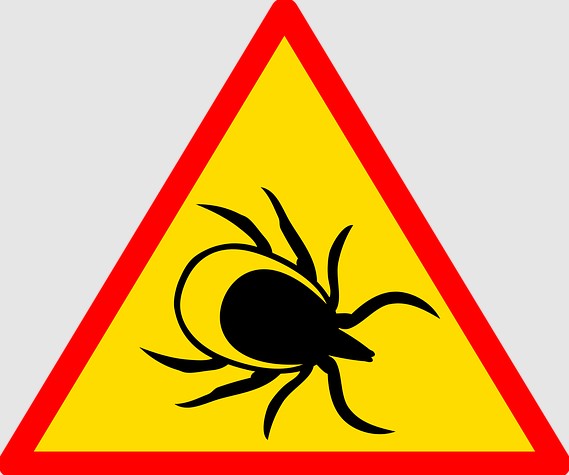Summer is quickly approaching! As the weather gets warmer, everyone is bound to want to spend some more time outside after another long winter in Lancaster, PA.
However, the more time we spend outside, the more susceptible we are to some of the little critters that come out when it’s warmer. Did you know ticks, specifically deer ticks, are known for carrying Lyme disease, which can ultimately affect your vision?
First Things First, What Is Lyme Disease?
Lyme disease is an illness caused by borrelia bacteria, and most humans usually get it after a bite from a tick carrying the bacteria.
Ticks that can carry borrelia bacteria live throughout most of the United States, so it’s important to always be cognizant of them. Those who live around grassy, bushy, or wooded areas are at the highest risk of contracting the disease. The best way to lower your risk of Lyme disease is to take safety measures and precautions in these areas.
What Are the Symptoms of Lyme Disease?
At first, a tick bite looks like a mosquito bite—a tiny, itchy bump on the skin. However, just because you get a tick bite doesn’t mean that you necessarily have a tick-borne disease. In fact, many people do not even notice when they have a tick bite.
The symptoms of Lyme disease vary and usually show up in stages. As it develops, a rash forms at the site of the bite, typically looking like a bullseye symbol.
Other symptoms may include:
- Swollen glands
- Headache
- Fatigue
- Joint pain
- Sore throat
- Fever
If the disease progresses and goes untreated, some of the other symptoms and side effects can become severe. Lyme disease in its later stages might consist of arthritic pain, fatigue, and cognitive difficulties. These symptoms can have a tremendous effect on a patient’s life, especially if left untreated.
How Can Lyme Disease Affect Your Vision?
In the early stages, some might experience visual symptoms such as blurred or double vision, visual fatigue, headaches during visual activities, losing their place when reading, and so on. Some might also experience even more obscure symptoms that are often not associated with vision, such as issues with their memory, balance, spatial orientation, and comprehension. Individuals might also experience sensitivity to sound or feel overwhelmed in crowded environments.
If the disease progresses without treatment, inflammation of the eye can develop. This can affect multiple parts of the eye, including the cornea, the iris, the choroid, and the uvea. Some may experience sensitivity to light or floaters as well.
Research has also shown that a tick-borne disease can compromise the visual process because those affected often develop habits to help them function with their compromised vision. This can lead to discomfort and compromise visual processing that is associated with one’s memories or cognitive functionality.
How Can It Be Treated?
It’s important to note that if Lyme disease is diagnosed and treated early enough, the prognosis usually looks good, and these eye complications can easily be prevented. Treatment usually consists of a round of antibiotics, which can be given orally or intravenously, depending on the severity of the symptoms.
Depending on the side effects of Lyme disease, those who have experienced Lyme disease might greatly benefit from Vision Therapy after the fact. However, it’s important to note that for better results, it’s best to treat the disease before attempting VT. VT is just like physical therapy, but for the eyes. It helps to improve visual function, which can potentially be compromised by Lyme disease if left untreated.
Vision therapy is a natural treatment for ADD in children. Rather than searching for ADD or ADHD doctors throughout Lancaster, PA, come see us at Vision Development Center of Lancaster!
Once visual function is improved, the changes are long-lasting and we have the reviews to prove it! Contact us today to talk to an expert.

